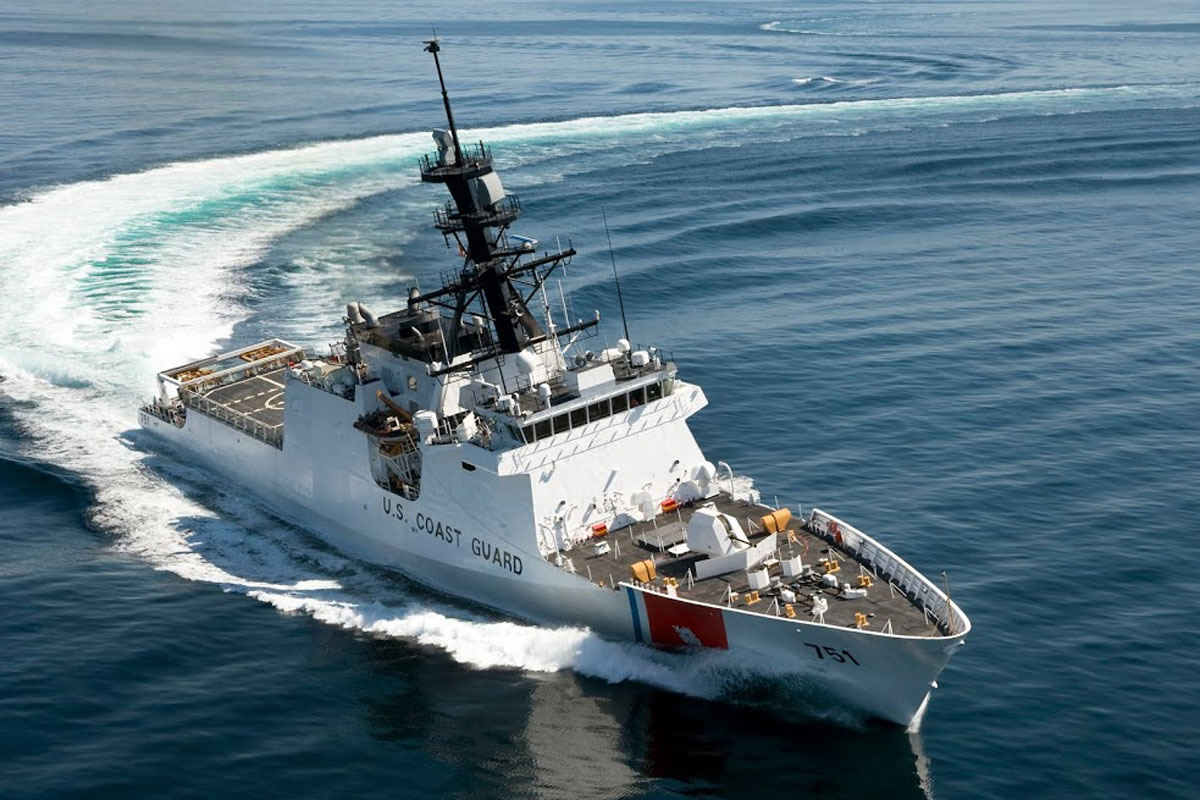- Jul 12, 2018
- 10,525
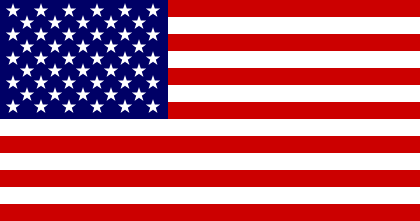
|
OPERATION NEPTUNE V |
SECRET |
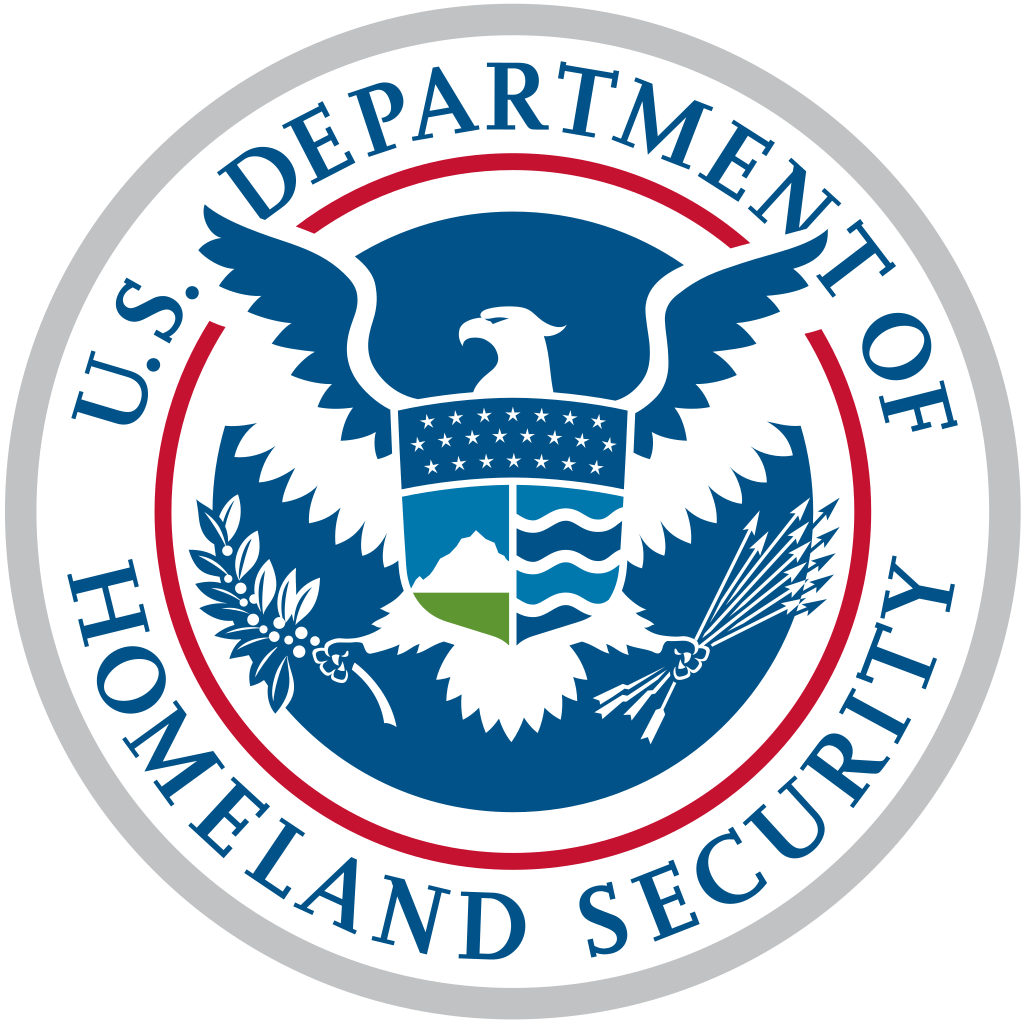
| 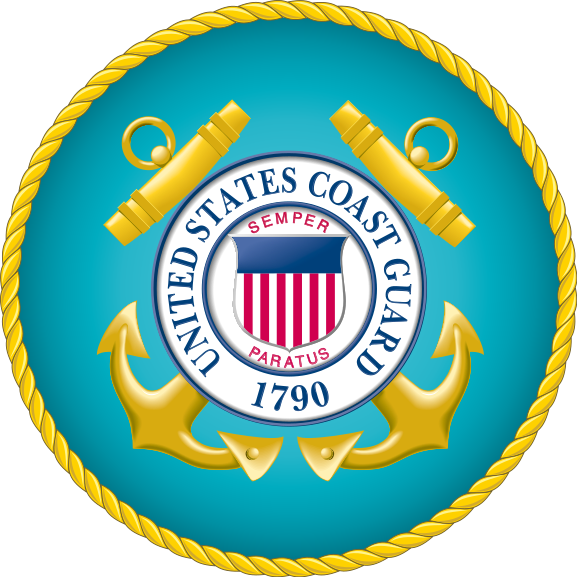
COAST GUARD DEPLOYMENT | 
|
|
CONTEXT
Pursuant to Executive Order 23-3, President Gore has ordered the United States Coast Guard to continue regular patrols through American territorial waters. This includes the waters of the United States itself, but also of the territories from Puerto Rico and the U.S. Virgin Islands in the Caribbean to Guam and American Samoa in the Pacific Ocean. With the success of the first four OPERATION NEPTUNE deployments of Coast Guard assets, the Coast Guard has successfully deployed its new Celestial-class Cutter in Operation Neptune III and IV. Five cutters were successfully deployed and the Coast Guard now has eleven of these cutters, which have replaced the Oliver Hazard Perry-class cutters which have been phased out of service. In this deployment, and future deployments, the Celestial-class will continue to be used in greater quantities.
Executive Order 23-3 made it clear that the mission of these patrols is "securing American territorial waters, protecting American sovereignty, enforcing United States federal law within territorial waters, environmental protection, and the preservation of life." The Commandant of the Coast Guard has decided that of these objectives, the three most critical are: securing American territorial waters, protecting American sovereignty, and the preservation of life. These three in particular will be guaranteed by having the Coast Guard patrol on the edge of America's territorial waters and out in the open seas.
This mission came during a rise of global tensions, focused in Southeast Asia. The Coast Guard would specifically focus on the national security aspect of thier mission for this deployment unless otherwise stated.
|

| 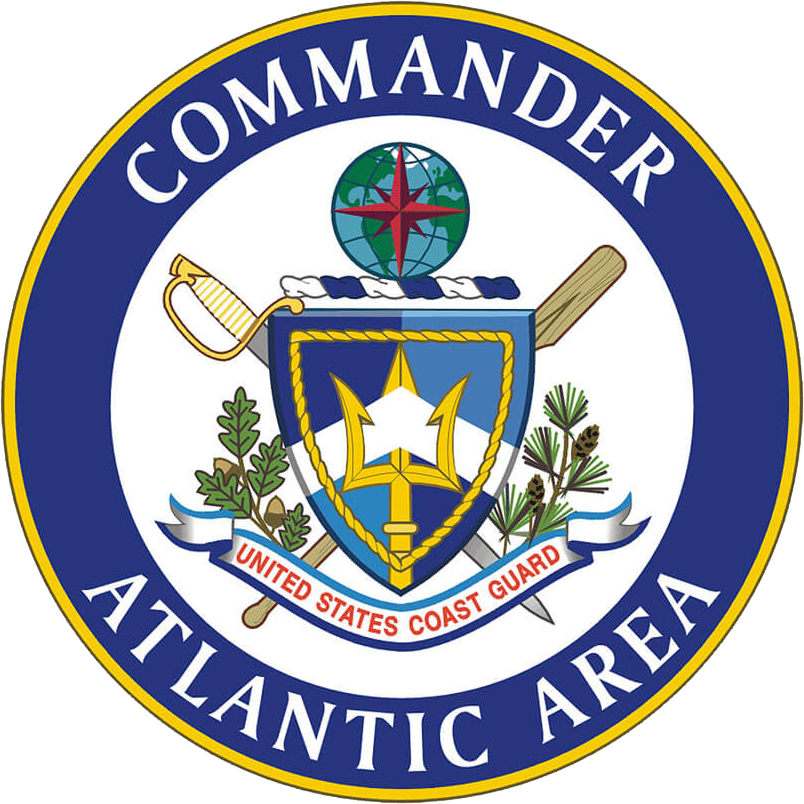
ATLANTIC AREA PATROLS | 
|
|
Atlantic Area
Vice Admiral Leon Black
Vice Admiral Leon Black
| SHIP CLASS | VESSEL | COMPLIMENT | HOME PORT |
| Celestial-class Cutter | USCGC Bertholf | 140 | Coast Guard Sector Key West |
| Celestial-class Cutter | USCGC Waesche | 140 | Coast Guard Sector Key West |
| Celestial-class Cutter | USCGC James | 140 | Coast Guard Sector San Juan |
| Celestial-class Cutter | USCGC Stratton | 140 | Coast Guard Base Portsmouth |
| Celestial-class Cutter | USCGC Hamilton | 140 | Coast Guard Base Portsmouth |
| Famous-class Cutter | USCGC Nantucket | 100 | Coast Guard Station South Portland |
| Famous-class Cutter | USCGC Loggerhead | 100 | Coast Guard Station South Portland |
| Famous-class Cutter | USCGC South Padre | 100 | Coast Guard Station South Portland |
| Famous-class Cutter | USCGC St. Thomas | 100 | Coast Guard Sector Key West |
| Famous-class Cutter | USCGC St. Croix | 100 | Coast Guard Sector Key West |
| Famous-class Cutter | USCGC Navassa | 100 | Coast Guard Station San Juan |
| Famous-class Cutter | USCGC Puerto Rico | 100 | Coast Guard Station San Juan |
| Famous-class Cutter | USCGC St. John | 100 | Coast Guard Sector Corpus Christi Harbor Facility |
| Famous-class Cutter | USCGC Monhegan | 100 | Coast Guard Sector Corpus Christi Harbor Facility |
| Famous-class Cutter | USCGC Largo | 100 | Coast Guard North Moorings |
| Famous-class Cutter | USCGC Bloodsworth | 100 | Coast Guard North Moorings |
DETAILS
Celestial-class Cutter - Fully Fueled; Aviation reserves fully fueled; Non-perishable food/water for 2 month journey; Well-rested, fed, and uniformed crew;
32-cell Mk 41 VLS: x5 RUM-139C (Mrk 54 Torpedo); x40 (Quad packed) RIM-162A ESSM; x17 RGM/UGM-109B Tomahawk Anti-Ship Missile;
Standard armaments including: x2 Mk 141 canister Harpoon missile launcher; x1 Mk 32 triple torpedo launcher; x2 Mk44 Bushmaster II 30-mm chain guns; x1 SeaRAM CIWS; x1 Mk 110 57mm gun; x4 crew-served .50 caliber Browning M2 machine guns; x2 crew-served M240B 7.62 mm machine guns;
Decoys: x2 Mk 36 SRBOC chaff rapid decoy launchers;
Compliment: 140 Coast Guard sailors;
Barracks: x100 Sig Sauer P229 DAK 9mm w/ Night Sights and x200 loaded magazines; x100 M4 Carbine and x300 loaded magazines; x10 M870P 12-gauge and x300 12-gauge shotgun shells.
Vehicles: x2 RHIB (each with mounted .50 cal Machine Gun); x2 MH-60 Jayhawk with 0.308 in (7.62×51 mm) M240H medium machine gun in starboard door (MH-60T).
*Note: The compliment of each Famous-class Cutter includes 8 pilots for the MH-60 Jayhawk.
Famous-class Cutter - Fully Fueled; Aviation reserves fully fueled; Non-perishable food/water for 2 month journey; Well-rested, fed, and uniformed crew;
Standard armaments including: x1 OTO Melara Mark 75 76 mm/62 caliber naval gun; x2 mounted .50 caliber (12.7 mm) machine guns; x100 M4 Carbines in armory and x300 loaded magazines; x100 SIG Sauer P226 pistols and x200 loaded magazines; and all of their necessary armaments and equipment;
Compliment: x100 Coast Guard sailors; x2 Coast Guard pilots;
Barracks: x100 M4 Carbines in armory and x300 loaded magazines; x100 SIG Sauer P226 pistols and x200 loaded magazines; and all of their necessary armaments and equipment;
Aircraft: x1 MH-60 Jayhawk with 0.308 in (7.62×51 mm) M240H medium machine gun in starboard door (MH-60T).
*Note: The compliment of each Famous-class Cutter includes 4 pilots for the MH-60 Jayhawk.
|

| PACIFIC AREA PATROLS | 
|
|
Pacific Area
Vice Admiral Sean Holmes
Vice Admiral Sean Holmes
| SHIP CLASS | VESSEL | COMPLIMENT | HOME PORT |
| Celestial-class Cutter | USCGC Munro | 140 | Coast Guard Base Honolulu |
| Celestial-class Cutter | USCGC Kimball | 140 | Coast Guard Base Honolulu |
| Celestial-class Cutter | USCGC Midgett | 140 | Coast Guard Base Honolulu |
| Celestial-class Cutter | USCGC Stone | 140 | Coast Guard Sector Guam |
| Celestial-class Cutter | USCGC Calhoun | 140 | Coast Guard Sector Guam |
| Celestial-class Cutter | USCGC Friedman | 140 | Coast Guard Sector Guam |
| Famous-class Cutter | USCGC Pickering | 100 | Coast Guard Exchange Los Angeles |
| Famous-class Cutter | USCGC Staten | 100 | Coast Guard Exchange Los Angeles |
| Famous-class Cutter | USCGC Maui | 100 | Coast Guard Base Seattle |
| Famous-class Cutter | USCGC O'ahu | 100 | Coast Guard Base Seattle |
| Famous-class Cutter | USCGC Attu | 100 | Coast Guard Base Honolulu |
| Famous-class Cutter | USCGC Johnston | 100 | Coast Guard Base Honolulu |
| Famous-class Cutter | USCGC Samoa | 100 | Coast Guard Base Honolulu |
| Famous-class Cutter | USCGC Tutuila | 100 | Coast Guard Base Honolulu |
| Famous-class Cutter | USCGC Guam | 100 | Coast Guard Sector Guam |
| Famous-class Cutter | USCGC Wake | 100 | Coast Guard Sector Guam |
| Famous-class Cutter | USCGC Baker | 100 | Coast Guard Station Port of Homer |
| Famous-class Cutter | USCGC Howland | 100 | Coast Guard Station Port of Homer |
| Famous-class Cutter | USCGC Marrowstone | 100 | Coast Guard Station Port of Homer |
| Famous-class Cutter | USCGC Santa Cruz | 100 | Coast Guard Station Port of Homer |
| Famous-class Cutter | USCGC San Miguel | 100 | Coast Guard Station Port of Homer |
Celestial-class Cutter - Fully Fueled; Aviation reserves fully fueled; Non-perishable food/water for 2 month journey; Well-rested, fed, and uniformed crew;
32-cell Mk 41 VLS: x5 RUM-139C (Mrk 54 Torpedo); x40 (Quad packed) RIM-162A ESSM; x17 RGM/UGM-109B Tomahawk Anti-Ship Missile;
Standard armaments including: x2 Mk 141 canister Harpoon missile launcher; x1 Mk 32 triple torpedo launcher; x2 Mk44 Bushmaster II 30-mm chain guns; x1 SeaRAM CIWS; x1 Mk 110 57mm gun; x4 crew-served .50 caliber Browning M2 machine guns; x2 crew-served M240B 7.62 mm machine guns;
Decoys: x2 Mk 36 SRBOC chaff rapid decoy launchers;
Compliment: 140 Coast Guard sailors;
Barracks: x100 Sig Sauer P229 DAK 9mm w/ Night Sights and x200 loaded magazines; x100 M4 Carbine and x300 loaded magazines; x10 M870P 12-gauge and x300 12-gauge shotgun shells.
Vehicles: x2 RHIB (each with mounted .50 cal Machine Gun); x2 MH-60 Jayhawk with 0.308 in (7.62×51 mm) M240H medium machine gun in starboard door (MH-60T).
DETAILS
Famous-class Cutter - Fully Fueled; Aviation reserves fully fueled; Non-perishable food/water for 2 month journey; Well-rested, fed, and uniformed crew;
Standard armaments including: x1 OTO Melara Mark 75 76 mm/62 caliber naval gun; x2 mounted .50 caliber (12.7 mm) machine guns; x100 M4 Carbines in armory and x300 loaded magazines; x100 SIG Sauer P226 pistols and x200 loaded magazines; and all of their necessary armaments and equipment;
Compliment: x100 Coast Guard sailors; x2 Coast Guard pilots;
Barracks: x100 M4 Carbines in armory and x300 loaded magazines; x100 SIG Sauer P226 pistols and x200 loaded magazines; and all of their necessary armaments and equipment;
Aircraft: x1 MH-60 Jayhawk with 0.308 in (7.62×51 mm) M240H medium machine gun in starboard door (MH-60T).
|
|
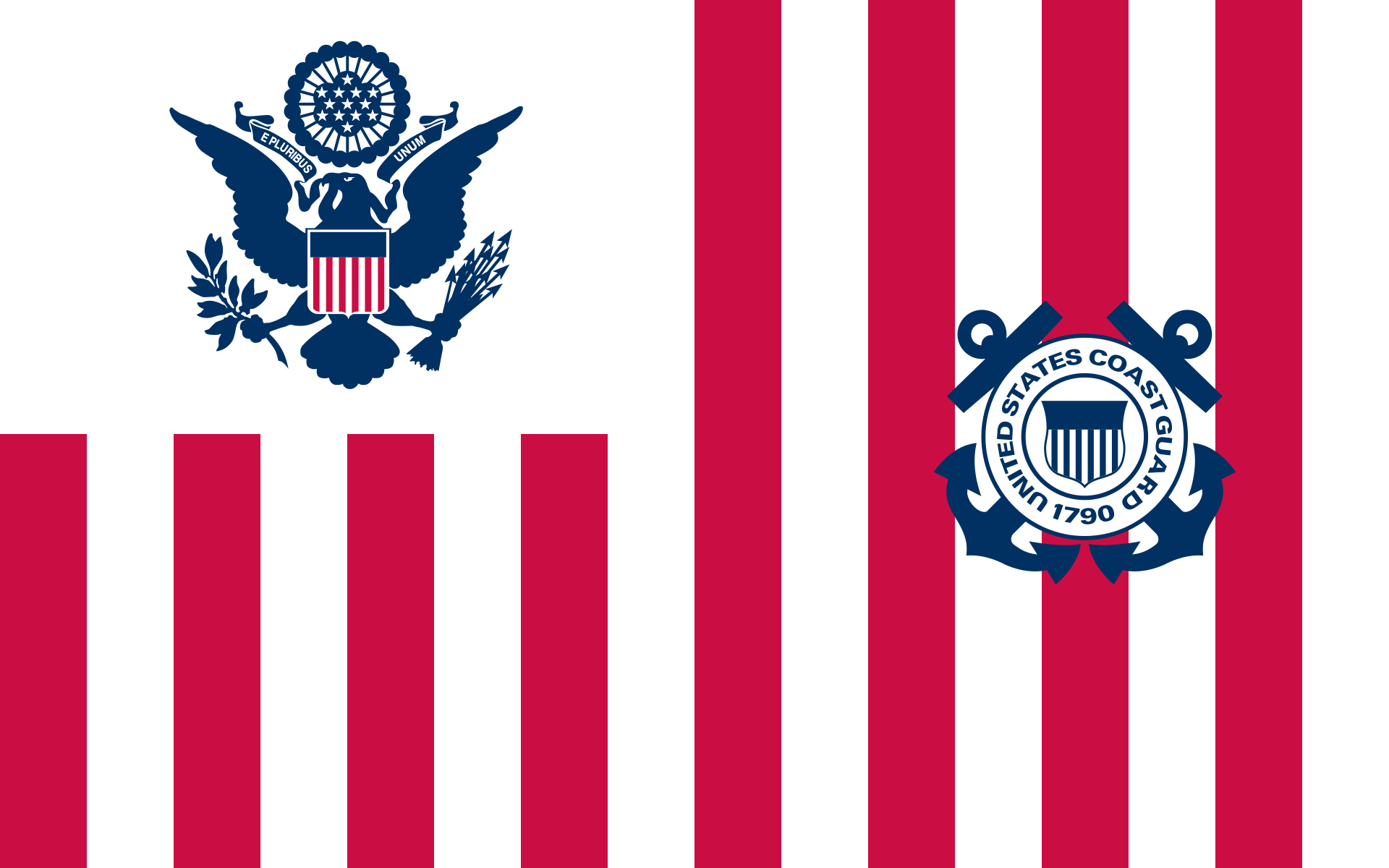
| 
DEPLOYMENT ORDERS | 
|
|
ATLANTIC AREA
The cutters mentioned to be operating in the Atlantic will leave port properly with all normal and standard safety precautions in order to avoid running aground or colliding with other ships or natural/artificial obstructions. All sightings of American warships (or armed ships) would be recorded and later reported, in secure writing, to the U.S. Coast Guard and the U.S. Navy. None of the cutters would ever enter the territorial waters of another nation (with the exception of the United Kingdom in certain legal circumstances). The cutters would also avoid all natural and unnatural obstacles to avoid a collision while on their journeys. The cutters will travel at 10 knots unless it is unsafe to do so. The cutters would obtain constant weather updates from the National Weather Service and the Coast Guard in order to ensure that the ships would be able to safely travel their routes and would plan accordingly in the event that they were heading into bad weather. When the cutters passed by land, designated watchmen would take close observations (with military-grade binoculars) and record what was observed. All of the cutters departed port with the maximum amount of food, water, and medical supplies that they would take on a standard 60-day deployment. The cutters would continue going back and forth on their designated routes unless they were rerouted for other duties, became distressed, needed to refuel (at which point they would use any appropriate U.S. Coast Guard port, U.S. Navy port, U.S. civilian port, or British Royal Navy or civilian port in case of an emergency - and the cutters would refuel with foresight so that they didn't run out of fuel in inappropriate places outside of the reach of the United States), or until it was time to return for port for the end of the tour.
East Coast Patrol
Celestial-class cutters Bertholf, Waesche, Stratton, and Hamilton properly departed from their home ports to begin a patrol of the Eastern seaboard of the United States. Their traveled route is pictured here - this route is accurate, to a degree. However, any implication that this route takes any cutter through the sovereign territory of another nation or into hazards that would harm the ship are not true. The cutters in Portsmouth would first head to Coast Guard Sector Key West. Once all cutters were in position, they would depart at different intervals so that they were evenly spaced in timing. The cutters in Florida would head north along the route, while the cutters in Maine would head south along the route. While they would come close to Bermuda, they would not enter British territorial waters. The vessels would continue going back and forth along this route until they would not be able to complete another rotation without refueling, at which point they would refuel at either Coast Guard Station South Portland or Coast Guard Sector Key West.
Famous-class cutters Nantucket, Loggerhead, South Padre, St. Thomas, and St. Croix properly departed from their home ports to begin patrol of the Eastern seaboard of the United States. Their traveled route is pictured here - this route is accurate, to a degree. However, any implication that this route takes any cutter through the sovereign territory of another nation or into hazards that would harm the ship are not true. Once all cutters were in position, they would depart at different intervals so that they were evenly spaced in timing. The cutters in Florida would head north along the route, while the cutters in Maine would head south along the route. The vessels would continue going back and forth along this route until they would not be able to complete another rotation without refueling, at which point they would refuel at either Coast Guard Station South Portland or Coast Guard Sector Key West.
TRANSIT
FN>FM>FL
FL>FM>FN
Carribean Patrol
Celestial-class Cutter James and Famous-class cutters Navassa and Puerto Rico properly departed from their home ports to begin patrol American territory in the Carribean. Their traveled route is pictured here - this route is accurate, to a degree. However, any implication that this route takes any cutter through the sovereign territory of another nation or into hazards that would harm the ship are not true. Once all cutters were in position, they would depart at different intervals so that they were evenly spaced in timing. The vessels would continue going back and forth along this route until they would not be able to complete another rotation without refueling, at which point they would refuel at Coast Guard Station San Juan.
TRANSIT
FK>FL
Gulf of Mexico Patrol
Famous-class cutters St. John, Monhegan, Largo, and Bloodsworth properly departed from their home ports to begin patrol of the Eastern seaboard of the United States. Their traveled route is pictured here - this route is accurate, to a degree. However, any implication that this route takes any cutter through the sovereign territory of another nation or into hazards that would harm the ship are not true. Once all cutters were in position, they would depart at different intervals so that they were evenly spaced in timing. The cutters in Texas would head east along the route, while the cutters in Florida would head south along the route. The vessels would continue going back and forth along this route until they would not be able to complete another rotation without refueling, at which point they would refuel at either Coast Guard Sector Corpus Christi or Coast Guard North Moorings.
TRANSIT
EL
PACIFIC AREA
The cutters mentioned to be operating in the Pacific will leave port properly with all normal and standard safety precautions in order to avoid running aground or colliding with other ships or natural/artificial obstructions. All sightings of American warships (or armed ships) would be recorded and later reported, in secure writing, to the U.S. Coast Guard and the U.S. Navy. None of the cutters would ever enter the territorial waters of another nation (with the exception of the United Kingdom in certain legal circumstances). The cutters would also avoid all natural and unnatural obstacles to avoid a collision while on their journeys. The cutters will travel at 10 knots unless it is unsafe to do so. The cutters would obtain constant weather updates from the National Weather Service and the Coast Guard in order to ensure that the ships would be able to safely travel their routes and would plan accordingly in the event that they were heading into bad weather. When the cutters passed by land, designated watchmen would take close observations (with military-grade binoculars) and record what was observed. All of the cutters departed port with the maximum amount of food, water, and medical supplies that they would take on a standard 60-day deployment. The cutters would continue going back and forth on their designated routes unless they were rerouted for other duties, became distressed, needed to refuel (at which point they would use any appropriate U.S. Coast Guard port, U.S. Navy port, U.S. civilian port, or British Royal Navy or civilian port in case of an emergency - and the cutters would refuel with foresight so that they didn't run out of fuel in inappropriate places outside of the reach of the United States), or until it was time to return for port for the end of the tour.
West Coast Patrol
Famous-class cutters Pickering, Staten, Maui, O'ahu, and San Miguel properly departed from their home ports to begin patrol of the West Coast of the United States. Their traveled route is pictured here - this route is accurate, to a degree. However, any implication that this route takes any cutter through the sovereign territory of another nation or into hazards that would harm the ship are not true. The cutters in Seattle would first travel to the Coast Guard Exchange Los Angeles, where they would then refuel. Once all cutters were in position, they would depart at different intervals so that they were evenly spaced in timing. The cutters in California would head north along the route, while the cutter in Alaska would head south along the route. The vessels would continue going back and forth along this route until they would not be able to complete another rotation without refueling, at which point they would refuel at either Coast Guard Exchange Los Angeles or Coast Guard Station Port of Homer.
TRANSIT
DM>CM>CN>CO>BO
BO>CO>CN>CM>DM
Alaska Patrol
Famous-class cutters Baker, Howland, Marrowstone, and Santa Cruz properly departed from their home ports to begin patrol of the western Alaskan coast of the United States. Their traveled route is pictured here - this route is accurate, to a degree. However, any implication that this route takes any cutter through the sovereign territory of another nation or into hazards that would harm the ship are not true. Once all cutters were in position, they would depart at different intervals so that they were evenly spaced in timing. The cutters in Alaska would head west along the route. The vessels would continue going back and forth along this route until they would not be able to complete another rotation without refueling, at which point they would refuel at Coast Guard Station Port of Homer.
TRANSIT
BO>AO>RO
RO>AO>BO
Hawaii Patrol
Famous-class cutters Attu, Johnston, Samoa, and Tutuila properly departed from their home ports to begin patrol of the Hawaiian Islands of the United States. Their traveled route is pictured here - this route is accurate, to a degree. However, any implication that this route takes any cutter through the sovereign territory of another nation or into hazards that would harm the ship are not true. Once all cutters were in position, they would depart at different intervals so that they were evenly spaced in timing. The cutters in Hawaii would head northwest along the route. The vessels would continue going around this route until they would not be able to complete another rotation without refueling, at which point they would refuel at Coast Guard Base Honolulu.
TRANSIT
BL>BK>BL>AL
Celestial-class cutters Munro, Kimball, and Midgett properly departed from their home ports to begin patrol of the State of Hawaii, Johnston Atoll, and the Pacific. Their route is pictured here - this route is accurate, to a degree. However, any implication that this route takes any cutter through the sovereign territory of another nation or into hazards that would harm the ship are not true. Once all cutters were in position, they would depart at different intervals so that they were evenly spaced in timing. The cutters in Hawaii would head southwest along the route. The vessels would continue going around this route until they would not be able to complete another rotation without refueling, at which point they would refuel at Coast Guard Base Honolulu.
TRANSIT
BL>AK>BK
Guam Patrol
Famous-class cutters Guam and Wake properly departed from their home ports to begin patrol of Guam and American territories in that area. Their traveled route is pictured here - this route is accurate, to a degree. However, any implication that this route takes any cutter through the sovereign territory of another nation or into hazards that would harm the ship are not true. Once all cutters were in position, they would depart at different intervals so that they were evenly spaced in timing. The cutters in Guam would head west along the route. The vessels would continue going around this route until they would not be able to complete another rotation without refueling, at which point they would refuel at Coast Guard Sector Guam.
TRANSIT
QK
Celestial-class cutters Calhoun and Friedman properly departed from their home ports to begin patrol of Guam and American territories in that area. Their traveled route is pictured here - this route is accurate, to a degree. However, any implication that this route takes any cutter through the sovereign territory of another nation or into hazards that would harm the ship are not true. Once all cutters were in position, they would depart at different intervals so that they were evenly spaced in timing. The cutters in Guam would head west along the route. The vessels would continue going around this route until they would not be able to complete another rotation without refueling, at which point they would refuel at Coast Guard Sector Guam.
TRANSIT
QK



